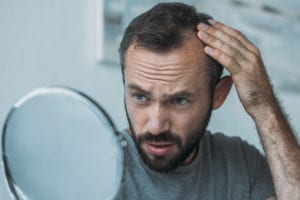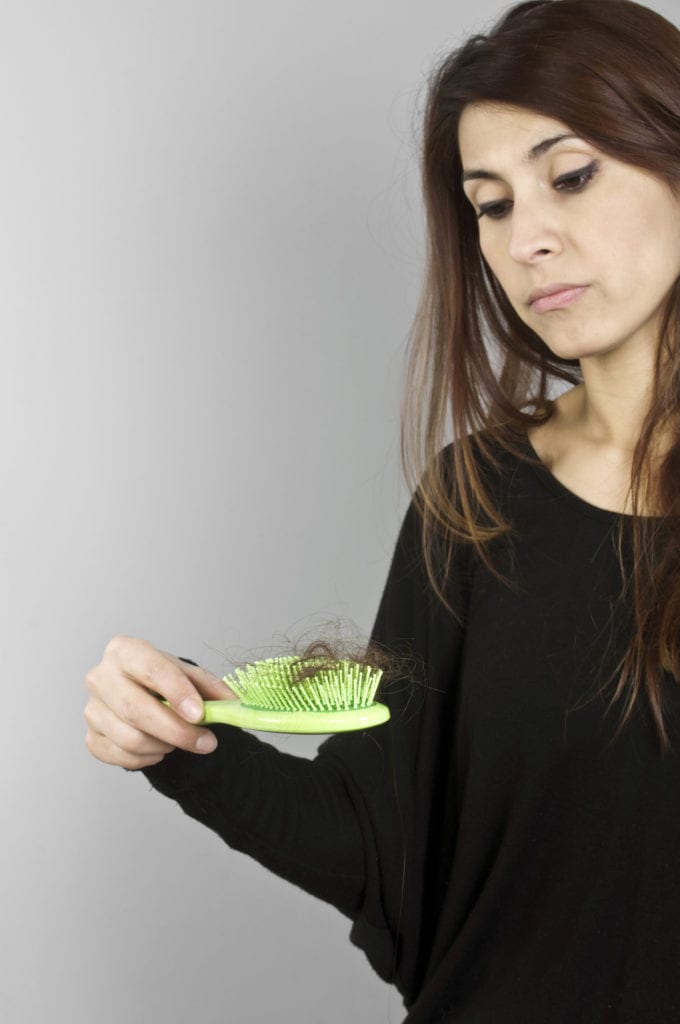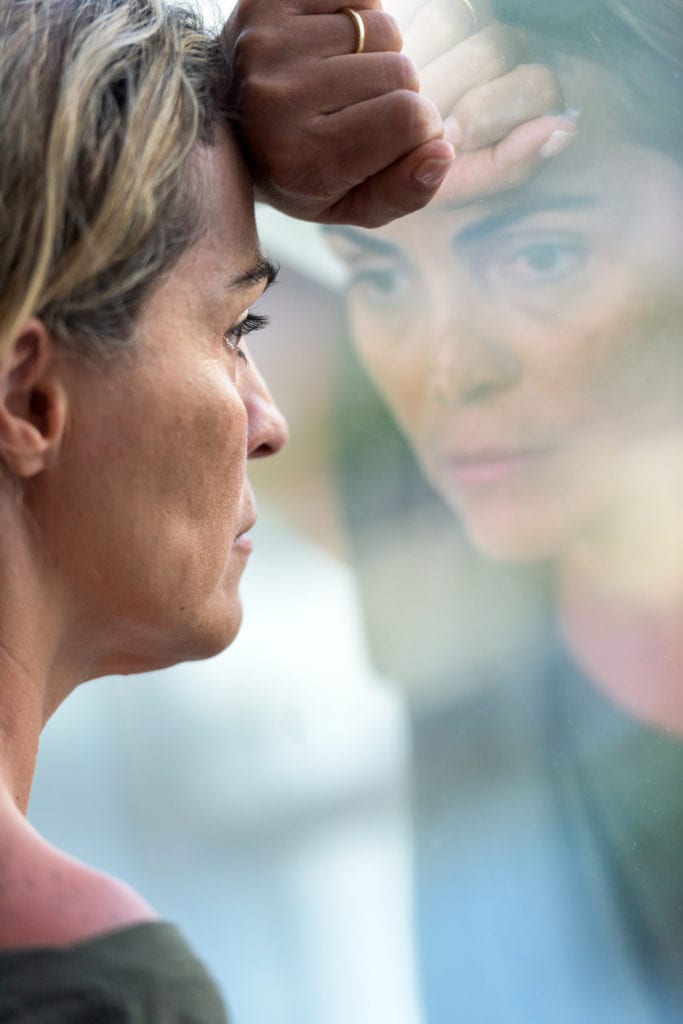Hair Loss Treatment Brownwood, TX
What is hair loss?

what causes hair loss?
The causes of hair loss can be broadly divided into two groups. One is a temporary effect and the other involves a prolonged action, usually involving genetics. In most cases when the hair loss is temporary it can be cured by medications and treatments. In contrast, long-term (prolonged) hair loss may require long-term treatment, and sometimes, surgery such as hair transplantation may be required.
Call Today to Schedule Your Appointment
Hormonal Imbalance
Hormonal imbalance can play a major role in temporary hair loss and can have a severe impact. Some of the common causes of hair loss diseases are Hormonal Imbalances, Inadequate Diet, and Medical Illnesses.
In men, hormonal imbalance is one of the major causes of hair loss. The male hormone that causes severe hair loss is testosterone. The enzyme, 5 alpha-reductase, which is present in the hair follicles converts testosterone into dihydrotestosterone (DHT). The DHT is the most potent androgen that promotes androgenetic alopecia – the common pattern of male baldness or premature hair loss.
Hair Loss in Women
Hair loss in women is often difficult to diagnose and can be caused by many factors, including alopecia areata, hormone imbalances, menopause, dietary protein, and amino acid deficiency, intestinal parasites, damage from hair treatments, and stress. Imbalance in thyroid hormones is one of the more common causes of sudden hair loss in women. When the thyroid gland is overactive or underactive, the hair may fall out. The hair follicles are particularly sensitive to concentrations of thyroid gland derived hormones. Thyroid hormones have a large influence on the cellular metabolism of scalp proteins, carbohydrates, lipids, and minerals. The cells of the hair matrix, due to their high degree of metabolic activity, are most profoundly influenced by the deficiency or excess of thyroid hormones.

Hair loss due to a hormonal imbalance is also largely seen in women during pregnancy. During pregnancy, there is a high level of estrogen hormones, but after childbirth, there is a rapid fall in the estrogen level and a large number of hair follicles fall out. Sometimes, hair loss in women is observed during the post-pregnancy period. Childbirth almost always causes some degree of temporary hair loss, sometimes occurring after a delay of a few months. Long-term hair loss after pregnancy may indicate the presence of a hormonal imbalance in the body.
Nutrition & Diet
Nutrition also has an impact on hair loss and takes on many forms of over and under the absorption of various nutrients. American’s high-fat, high-animal protein, and high-salt diet damages the kidneys and creates acidic blood, thereby leading to hair loss. Also, the typical American diet is also usually low in vitamins and sometimes can either be under or over absorbed by an individual. Poor appetite, digestion, and poor absorption are also experienced by adults with zinc deficiency, and even taking too large amounts of vitamins such as Vitamin A over long periods can be toxic to the body. Some people take up crash diets in order to achieve rapid weight loss that is low in protein, vitamins, and minerals and may lead to malnutrition. Other people are prone to abnormal eating habits leading to an unhealthy diet.
When there is a lack of nutrients being absorbed or consumed, the body will naturally try to economize by shifting growing hairs into the resting phase. As hair is made up of keratin, a form of protein, and requires several minerals and protein to make the hair, during the protein scarcity period, the hair fibers are forcibly sent into a resting phase, and hair shedding occurs after a period of time. But the condition can be reversed and prevented by eating a properly nutritious diet.
Illness
Illnesses can also cause hair loss. High fever, severe infection, or flu are some of the serious illnesses that may cause the hair follicles to enter a resting phase as well. Some cancer treatments also prevent the dividing of hair follicle cells and as a result, the growth of the hair fiber is stopped and the hair becomes thin, breaks off and gradually hair loss occurs. This hair loss starts within 1-3 weeks after the beginning of the chemotherapy treatment and patients can lose upwards of 90% of their hair. Other medical conditions can be fungus, gastrointestinal problems, or other types of dermatological disorders that may result in hair loss.
Natural Causes
There are also natural reasons for hair loss such as improper hair care that result in severe hair loss diseases like traction alopecia. Traction alopecia is a condition in which the hair fibers are pulled out from the hair follicle by a hairstyle that pulls on the roots of the hair fibers. Sometimes the strong chemicals that are used in hair treatments are kept on the hair for a longer period than they should be.
Hair Loss Treatments
So if you are experiencing hair loss, baldness, or thinning hair, always remember, many of the causes of hair loss are temporary and can be prevented with the right measures and proper care. Our approach to hair loss is multi-factorial, we take into effect nutrition, hormonal imbalances, lifestyle issues, and your past medical history in addressing the issue. Hormonal panels are typically performed and a natural balancing of your hormones is prescribed if needed as well as recommendations for diet and nutritional products to reverse thinning or premature hair loss. Our staff in Brownwood, Texas understands that hair loss is multifaceted and will address these factors in a variety of treatment protocols. Most hair loss is avoidable, so give yourself peace of mind that you have pursued all avenues in reversing your hair loss concerns.
Hair Loss Treatment FAQs
How can hair loss be treated?
You’ve heard the ads and infomercials touting the latest scheme for regrowing hair and ending thinning. Here’s the reality. Let’s walk through the available options.
- Minoxidil — Minoxidil is the only over-the-counter medication for hair loss approved by the FDA for use by both men and women. It won’t return hair to areas it has left, but it will slow hair loss. Brand names are Rogaine and Theroxidil. These products, and the generic form, work for about two thirds of men and women. They are most effective when the patient is under age 40 and has just begun to lose his or her hair.
- A Prescription strength pill is also available but it is used for blood pressure.
- Finasteride — Finasteride is a prescription oral tablet used to treat male pattern hair loss. Brand name is Propecia. Also prescribed to treat an enlarged prostate, finasteride works by decreasing the amount of the hormone dihydrotestosterone (DHT) in your body. DHT normally causes the prostate gland to grow larger, but the decrease also leads to increased hair growth and decreased hair loss. Finasteride doesn’t affect hair growth on other parts of the body.
- Anti-Androgen Therapy — Androgens include testosterone and other male hormones. These can accelerate hair loss in women. Some women who don’t respond to minoxidil may benefit from the addition of the anti-androgen drug spironolactone for the treatment of androgenetic alopecia, commonly known as female pattern hair loss.
is hair loss related to menopause?

Two things can happen to a woman’s hair during menopause. First, and certainly unwelcome, is the growth of new hair where you didn’t have it before, such as the chin. Second, the hair you have will begin to thin. It’s thought that both of these changes in hair growth are due to changing hormone levels during menopause. Estrogen and progesterone levels fall, meaning that the effects of the androgens (male hormones) are increased. This is the reason for new hair in odd places.
The aging process often causes female-pattern hair loss, or androgenetic alopecia. This type of hair loss can worsen with the hormone changes of menopause. Unlike male-pattern hair loss, which occurs usually on the front crown of the head, female-pattern hair loss begins along the part in the center.
During and after menopause, hair might become finer because the hair follicles shrink. When this happens, hair grows more slowly and falls out more easily.
Schedule a Consultation Today!
If you’re interested in learning more about hair loss treatment please contact us for a consultation at (325) 641-1927 or fill out our contact us form below. We will discuss your needs and concerns, and determine your best course of action.


